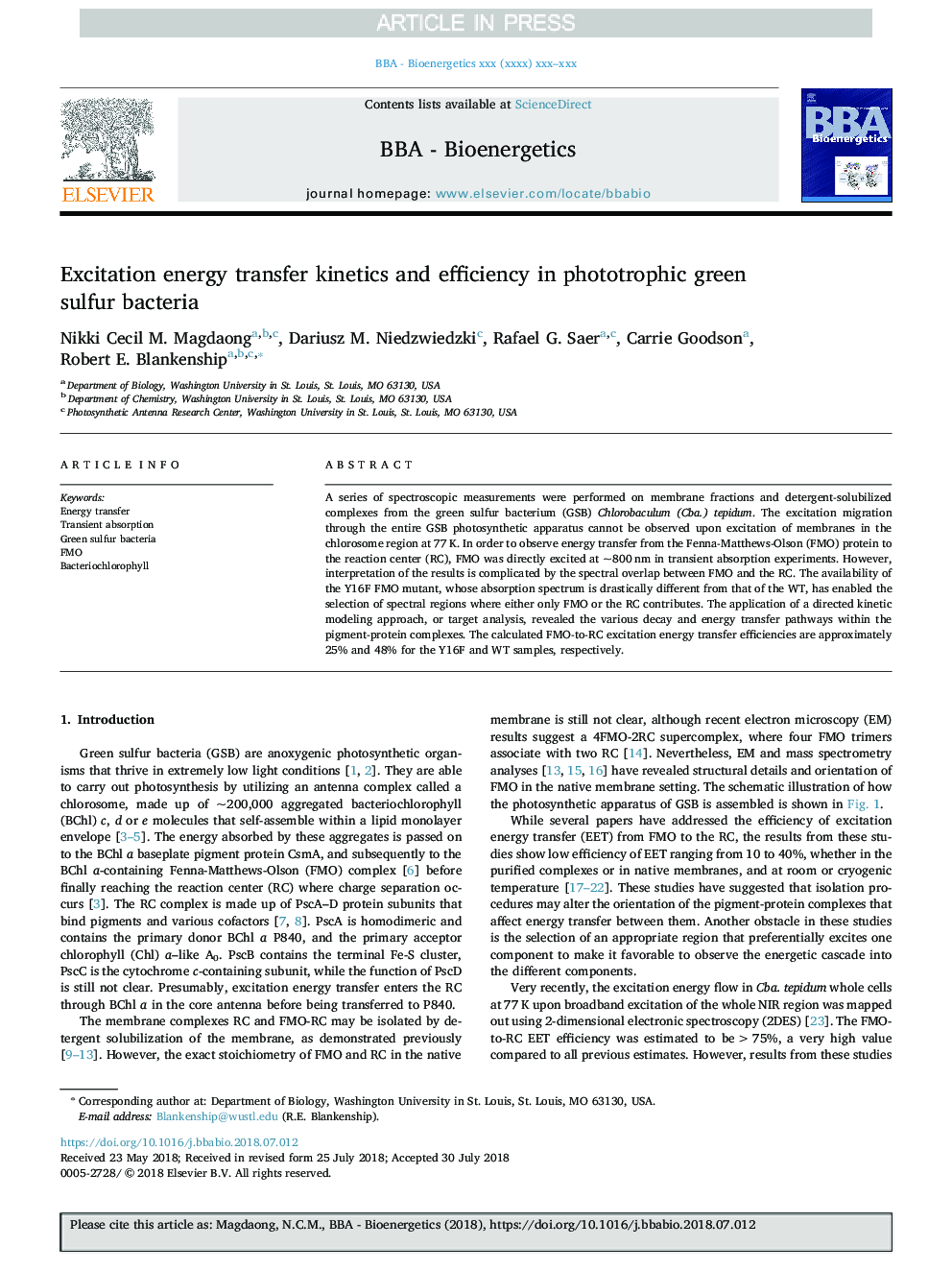| Article ID | Journal | Published Year | Pages | File Type |
|---|---|---|---|---|
| 8949259 | Biochimica et Biophysica Acta (BBA) - Bioenergetics | 2018 | 11 Pages |
Abstract
A series of spectroscopic measurements were performed on membrane fractions and detergent-solubilized complexes from the green sulfur bacterium (GSB) Chlorobaculum (Cba.) tepidum. The excitation migration through the entire GSB photosynthetic apparatus cannot be observed upon excitation of membranes in the chlorosome region at 77â¯K. In order to observe energy transfer from the Fenna-Matthews-Olson (FMO) protein to the reaction center (RC), FMO was directly excited at ~800â¯nm in transient absorption experiments. However, interpretation of the results is complicated by the spectral overlap between FMO and the RC. The availability of the Y16F FMO mutant, whose absorption spectrum is drastically different from that of the WT, has enabled the selection of spectral regions where either only FMO or the RC contributes. The application of a directed kinetic modeling approach, or target analysis, revealed the various decay and energy transfer pathways within the pigment-protein complexes. The calculated FMO-to-RC excitation energy transfer efficiencies are approximately 25% and 48% for the Y16F and WT samples, respectively.
Related Topics
Life Sciences
Agricultural and Biological Sciences
Plant Science
Authors
Nikki Cecil M. Magdaong, Dariusz M. Niedzwiedzki, Rafael G. Saer, Carrie Goodson, Robert E. Blankenship,
